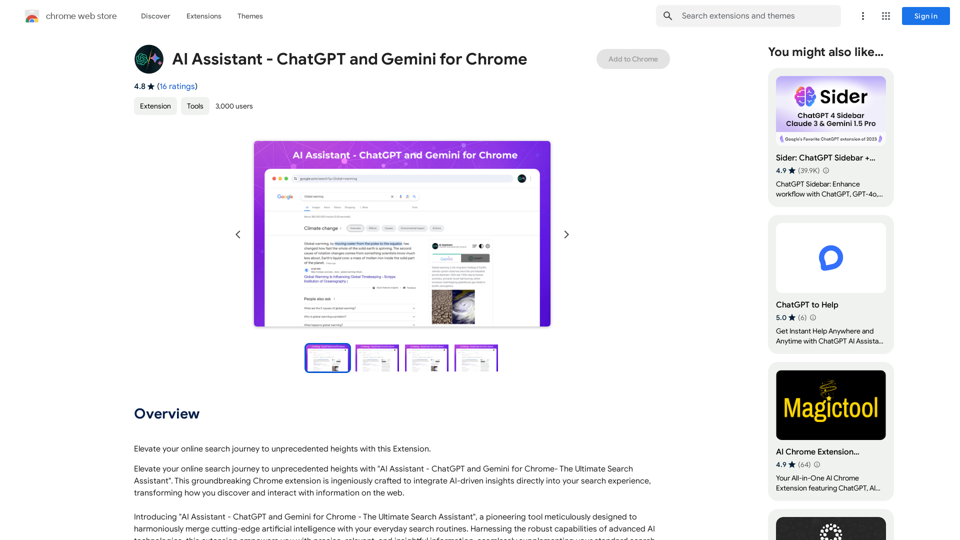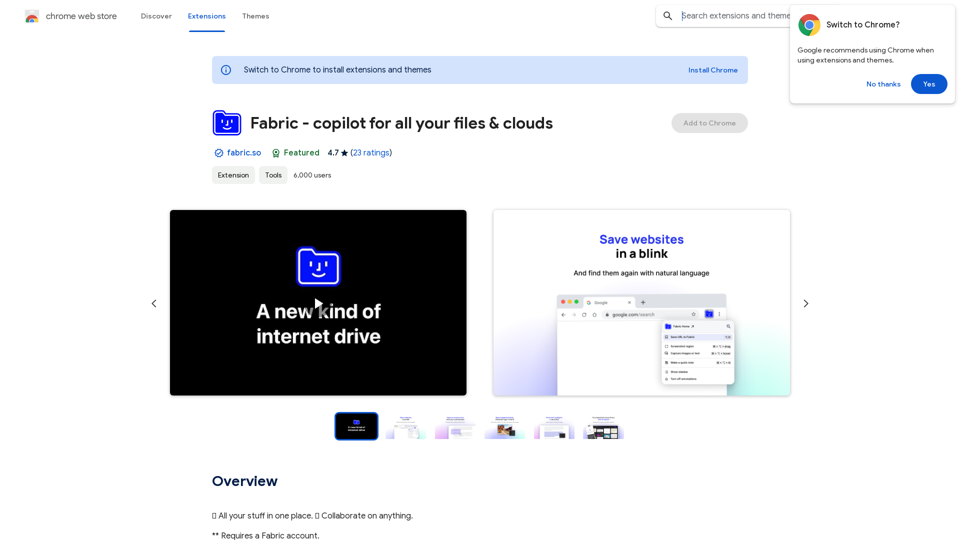Vocha est une extension Chrome conçue pour améliorer l'expérience ChatGPT en permettant la saisie vocale. Elle ajoute un bouton microphone au champ de message, permettant aux utilisateurs de dicter leurs messages à l'aide de commandes vocales. Cet outil est particulièrement utile pour ceux qui préfèrent parler plutôt que taper ou qui ont besoin de communiquer dans plusieurs langues.
Vocha | Voix pour ChatGPT
Voix pour ChatGPT
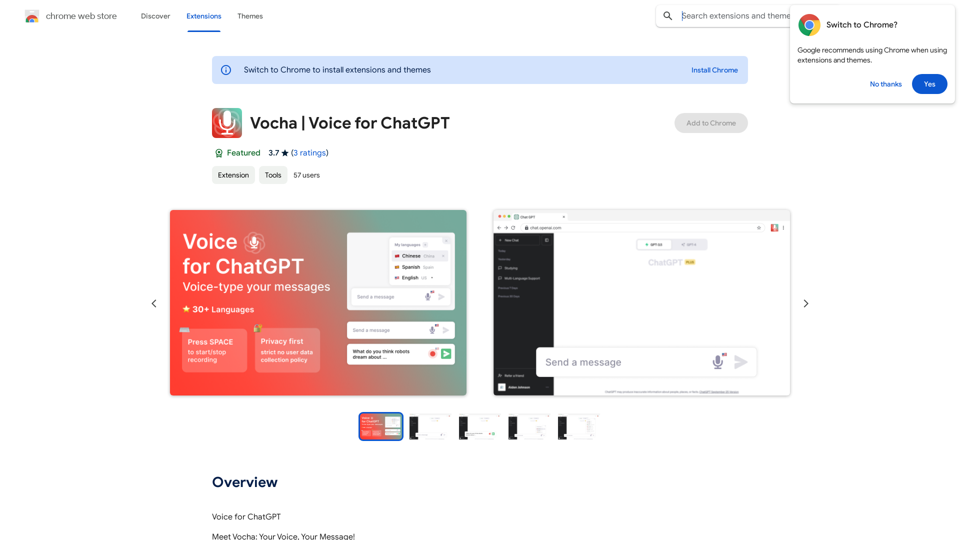
Introduction
Fonctionnalité
Intégration facile de la saisie vocale
Vocha s'intègre parfaitement à ChatGPT, ajoutant un bouton microphone au champ de message. Les utilisateurs peuvent activer cette fonction en utilisant le raccourci ESPACE ou en cliquant sur le bouton, rendant la saisie vocale rapide et pratique.
Support multilingue
L'extension prend en charge plus de 30 langues, répondant aux besoins d'une base d'utilisateurs mondiale. Les utilisateurs peuvent facilement passer d'une langue à l'autre, ce qui en fait un outil idéal pour la communication multilingue.
Gestion flexible des messages
Après avoir enregistré un message, les utilisateurs ont la possibilité de l'envoyer immédiatement, de le modifier avant l'envoi ou de continuer l'enregistrement. Cette flexibilité garantit que les utilisateurs ont un contrôle total sur leurs messages saisis vocalement.
Installation et configuration simples
L'installation de Vocha est simple :
- Installez l'extension depuis le Chrome Web Store
- Rechargez la page web pour activer l'extension
- Accordez l'accès au microphone lorsque vous y êtes invité
Interface conviviale
L'extension ajoute un bouton microphone et un drapeau de sélection de langue à l'interface ChatGPT, facilitant l'accès et l'utilisation de la fonction de saisie vocale.
FAQ
Comment activer la saisie vocale avec Vocha ?
Pour commencer la saisie vocale, vous pouvez soit :
- Appuyer sur le raccourci clavier ESPACE
- Cliquer sur le bouton microphone dans le champ de message
Vocha prend-il en charge plusieurs langues ?
Oui, Vocha prend en charge plus de 30 langues. Vous pouvez changer de langue en cliquant sur l'icône du drapeau près du bouton microphone et en sélectionnant votre langue préférée.
Ma vie privée est-elle protégée lors de l'utilisation de Vocha ?
Vocha donne la priorité à la confidentialité des utilisateurs et ne collecte ni n'utilise vos données à des fins de formation ou à d'autres fins.
Que dois-je faire si Vocha ne fonctionne pas après l'installation ?
Si vous rencontrez des problèmes après avoir installé Vocha, essayez ce qui suit :
- Rechargez ou actualisez la page web pour vous assurer que l'extension est correctement activée
- Assurez-vous d'avoir accordé l'accès au microphone lorsque vous y êtes invité
Puis-je modifier mon message saisi vocalement avant de l'envoyer ?
Oui, après avoir enregistré votre message, vous avez la possibilité de le modifier avant de l'envoyer. Vous pouvez également choisir de l'envoyer immédiatement ou de continuer l'enregistrement.
Dernières informations sur le trafic
Visites mensuelles
193.90 M
Taux de rebond
56.27%
Pages par visite
2.71
Temps sur le site(s)
115.91
Classement mondial
-
Classement par pays
-
Visites récentes
Sources de trafic
- Médias sociaux:0.48%
- Références payées:0.55%
- Email:0.15%
- Références:12.81%
- Moteurs de recherche:16.21%
- Direct:69.81%
Sites web connexes
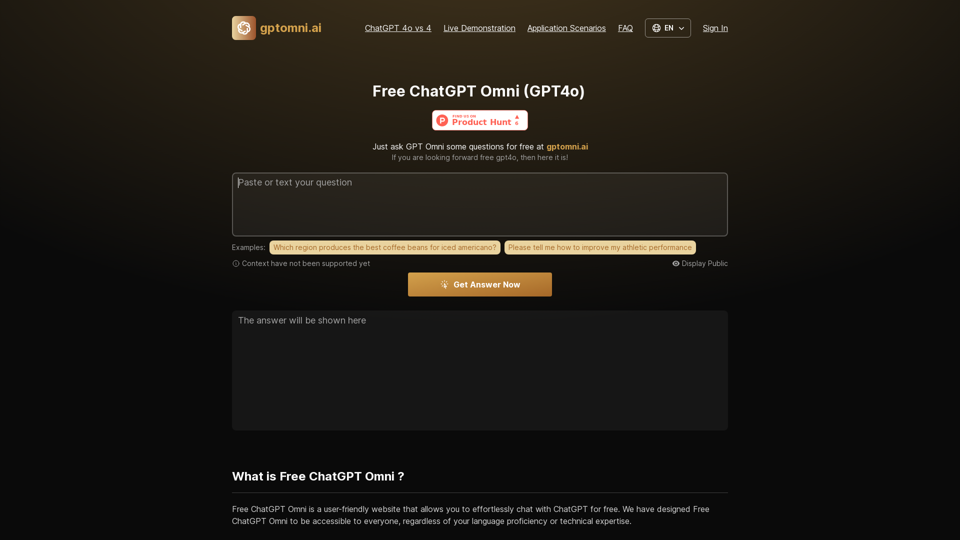
Free ChatGPT Omni : gptomni.ai propose une interface de chat en ligne gratuite, pratique et conviviale pour les conversations par intelligence artificielle grâce au modèle GPT4o.
1.25 K
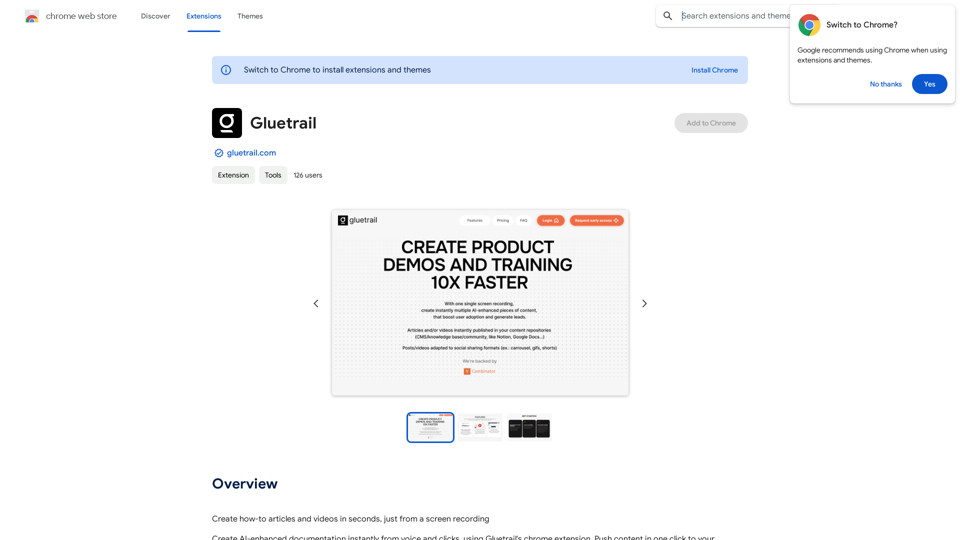
Créez des articles et des vidéos pratiques en quelques secondes, à partir d'un simple enregistrement d'écran.
193.90 M
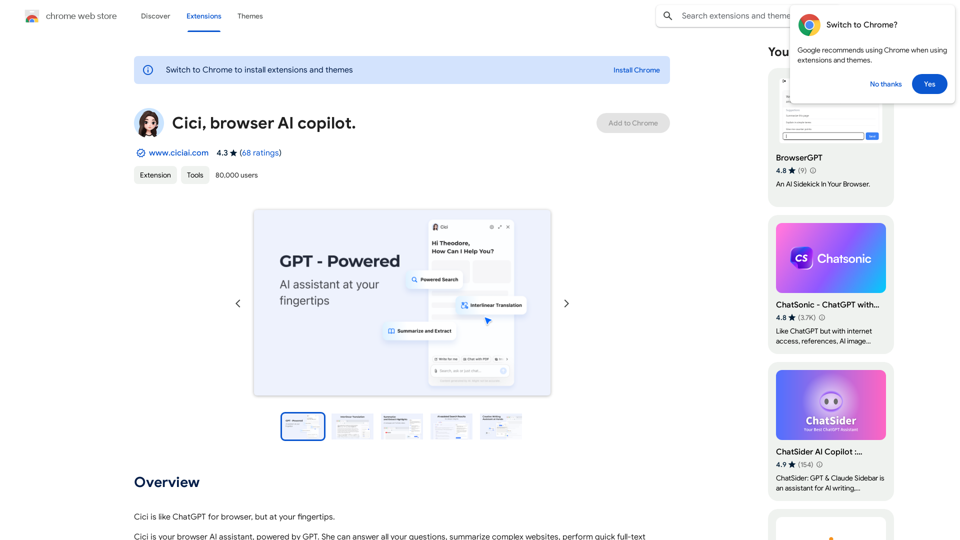
Cici, copilote d'intelligence artificielle du navigateur.
Cici, copilote d'intelligence artificielle du navigateur.Cici est comme ChatGPT pour navigateur, mais à portée de main.
193.90 M
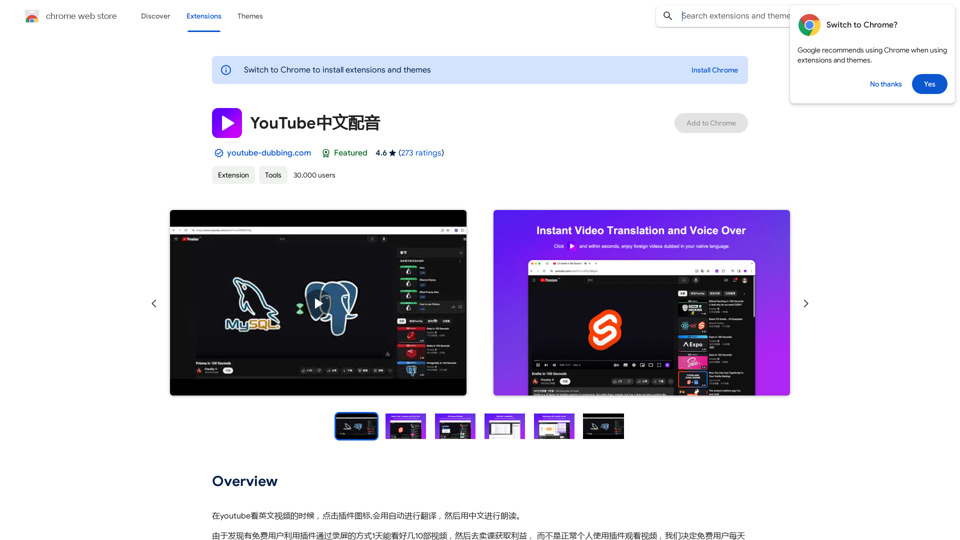
Lorsque vous regardez des vidéos en anglais sur YouTube, cliquez sur l'icône de la vidéo, cela sera automatiquement traduit, puis lu en chinois.
193.90 M
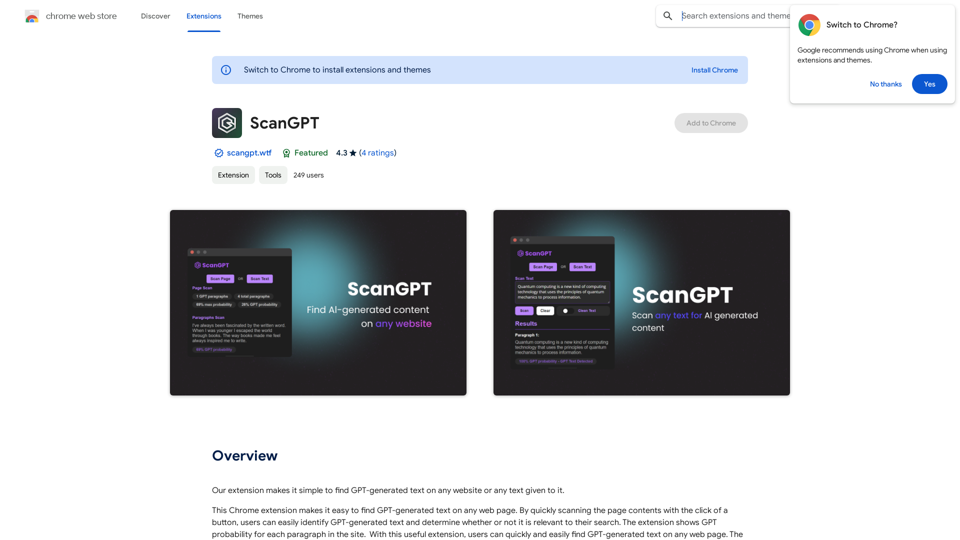
Notre extension facilite la recherche de texte généré par GPT sur n'importe quel site Web ou de tout texte qui lui est fourni.
193.90 M
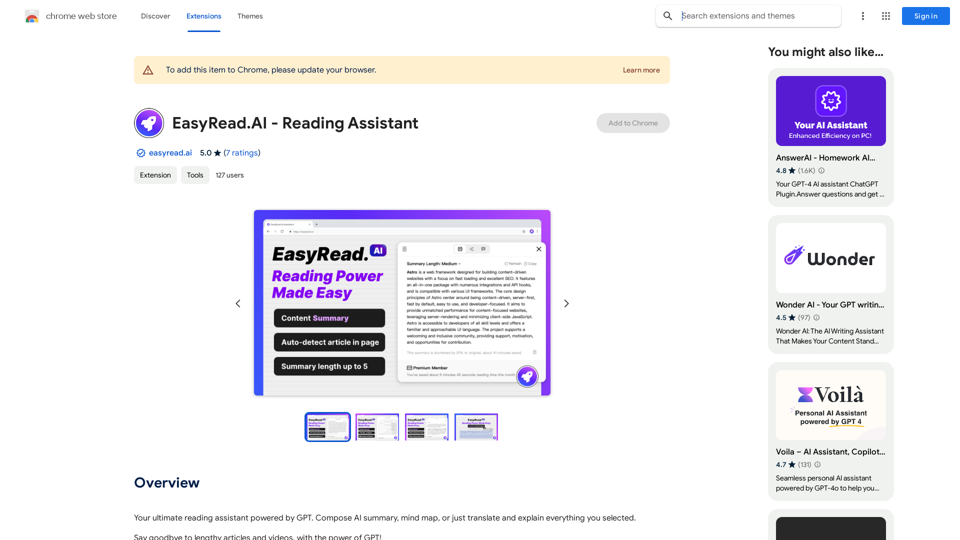
Votre assistant de lecture ultime alimenté par GPT. Composez un résumé AI, une carte mentale ou traduisez et expliquez tout ce que vous avez sélectionné.
193.90 M
